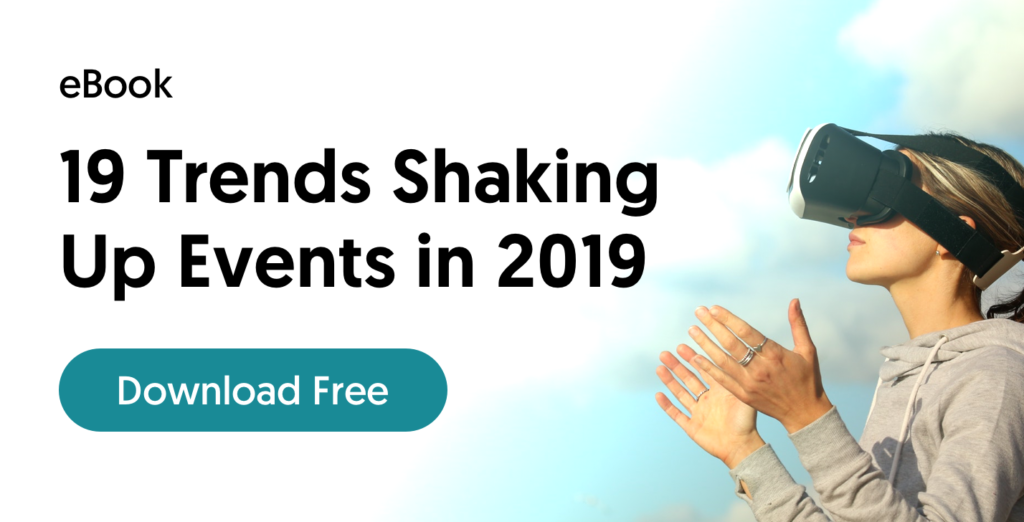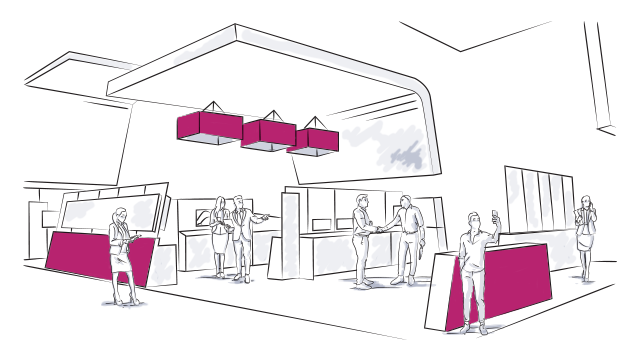
Friday Finds: 6 Creative Uses for Event Rendering Software
To stand out from the competition, event planners and venue managers must move at lightning speed. They must design events that excite the imaginations of attendees! One great way to get creative is to leap outside the box with event rendering software and floor plan makers.
Today’s tools do more than just arrange banquet tables in a ballroom. Event rendering and planning software helps users collaborate more easily with team members and clients, work more efficiently, and automate time-consuming tasks.
They can also be a great launch pad for innovation. And in the events industry today”that’s the name of the game.
As we surf the fast-changing trends in the event industry, here are 6 ways venues and planners can get creative with event rendering software.
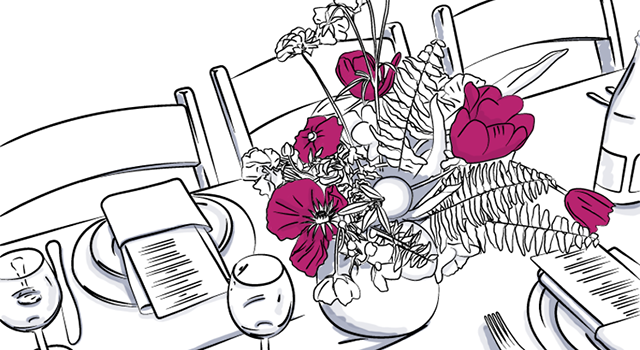
1. Ease the pain point of venue sourcing
Only 16-percent of event planners say they’re extremely certain of their venue when they begin the planning process, according to the latest Global Planner Sourcing Report from Cvent.
This stat means the vast majority of planners face a time-consuming process of evaluating proposals and visiting venues for walk-throughs.
The easier a venue is to find on venue-sourcing platforms, and the clearer the site aligns with the event goal–the quicker and easier the process is for everyone. Planners spend less time looking through venues that ultimately aren’t a good fit. On the other hand, venues appeal most to the very planners most likely to sign a contract with them: win-win.
Venues should consider making attractive, clear 3D renderings of their spaces for venue-sourcing platforms. Showcase traditional room setups”they maximize venue capacity, and some clients prefer the tried-and-true approach.
For events with extra room capacity to play with, though, don’t hesitate to get creative. Create an inside/outside layout with banquet tables stretching through barn-style doors (with a plan B for bad weather). Or craft small, intriguing environments within a large banquet hall. Imagine a French cafe next to a country picnic next to a low-key pub!
2. Collaborate in the cloud
The events industry is seeing a trend toward local foods, talent, and decorations. However, that doesn’t mean the planner, stakeholders from the venue, and the clients will all be in the same room.
Whether members of the event team are across the building, across town, across the country, or further–cloud-based floor plan makers allow the team to work together in real time.
Share other important documents, too. Everyone on the event team with a smartphone can have the entire life cycle of the event at their fingertips”from wedding inspiration images to the finalized BEO and everything in between.
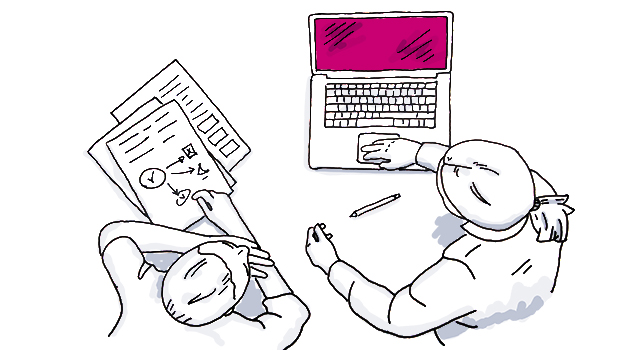
3. Step outside the ballroom
Venue sourcing is getting ultra creative. There’s massive demand for venue space right now, and that demand is slated to stay high. At the same time, non-traditional spaces have a strong appeal to millennials.
For planners, this means the opportunity to use a floor plan maker in a wild assortment of spaces. Maybe a recurring musical event is happening the first month in a rug showroom. Piles of rugs can also serve as seating. The following month, you might opt for a grassy courtyard.
Planners can demonstrate how to meet the same needs in both places: space for attendees to sit facing the musicians, room to stand and chat further away, space to move around, and outlets for amps and speakers.
For traditional venues, floor plan makers can help expand usable space, from rooftops to courtyards to entrance halls. Use the floor plan makers to turn these into enticing spaces for relaxing, networking, and enjoying food and drink.
A combination of high and low tables and seating gives guests options. It also often spurs the planner’s creativity. Looking at these layouts inspires ideas, such as quick icebreaker games, placing fidget items on high tops, or board games at cafe tables.
Look everywhere for non-traditional event space opportunities. An empty, cobblestoned expanse under an overpass? A planetarium? A library after hours? There are usually a few extra steps to make these events happen”and sometimes they aren’t feasible. But when they do take place, they are unforgettable.
4. Be prepared for complex event logistics
With a surge in interactive experiences, music, and other unusual or festival-type entertainment at events, planners must expect ever more complicated logistics.
Use the floor plan maker to ensure outlets are plentiful enough and conveniently located; risers or stages will suit the space, and the room is up to fire and safety codes.
Venues can jump on the trend toward wellness in conferences and trainings, too. Are there breakout areas that might be good for yoga, meditation, or tech-free ˜unplugging’? A space with natural light and plants is a good option for wellness activities or quiet time.
Take some quality photos of the space, and use the 3D rendering capacity of a floor plan maker to help potential clients visualize different configurations.
5. Dazzle guests through integrated tools
They say you never get a second chance to make a first impression. Check-in is the first impression of your event, so it should be easy and quick.
A buzz of activity around registration? Great. But a long, unmoving line? Not so hot.
Enter, event check-in apps.
Floor plan makers like Social Tables include guest management tools that make check-ins flow and help planners ensure a personal touch throughout the event. For example, specialty food options for restricted dietary only make an impression when they’re delivered correctly with no mishaps or fuss.
When guest management and floor plans are integrated, you can check-in your guests, manage their seating, and match them with their meals all in one place.
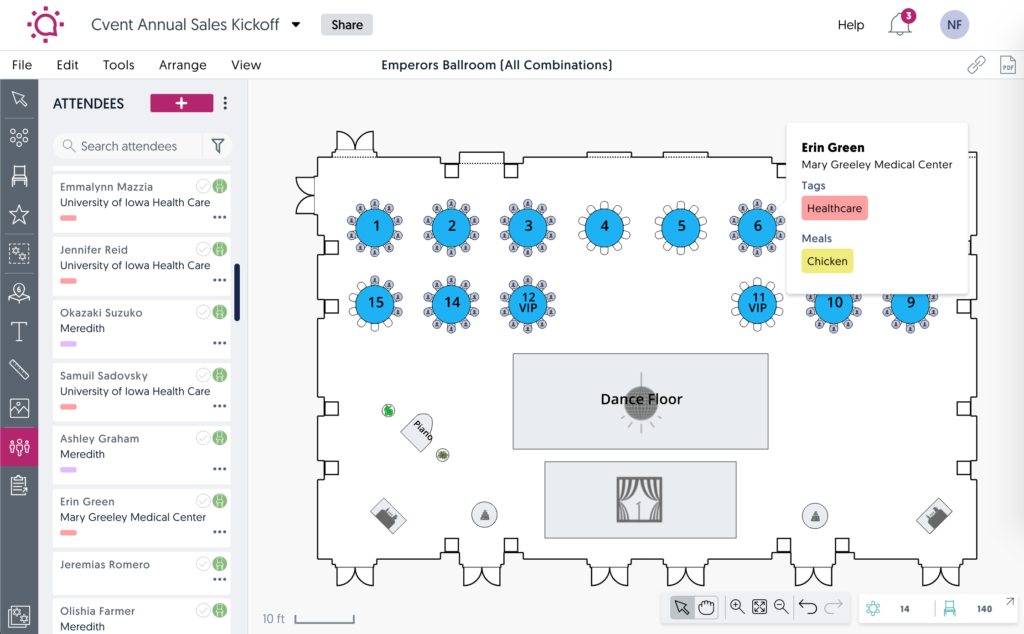
6. Make a splash by sharing 3D renderings
Have a great 3D rendering of the space for an upcoming event? Post that beauty on Instagram! These detailed images help people visualize themselves in the space, make the event a priority (ideally), and build excitement.
Venues can (and should!) show off, too. Build an event portfolio the venue website, put great-looking content on Facebook and Instagram, and make a strong showing on venue sourcing sites.
Be creative”provide 3D renderings of the many possibilities of your space to help people visualize what hasn’t been there yet. Include clear, attractive photos of the space and past events, and definitely don’t forget video. 60-percent of event planners say video is the most helpful inclusion.
Ready to get creative? Discover 8 of the top online venue finders to find exceptional spaces, or read our free 2019 event trends ebook to inspire outside-the-box ideas.
